
Top of the Pops
The 2009 ARIA Awards were an audiovisual treat.
Text & Images:/ Tim Stackpool
With a much-anticipated performance by a major international artist and plenty of speculation as to who would take out the major gongs, the ARIA Awards for 2009 left little room for mediocre production elements or poorly considered visuals. And certainly none were delivered. A venue packed full of industry luminaries and an equal measure of die-hard fans were treated to a visual fiesta worthy of the Australian recording industry’s premier event.
Lighting designer Hugh Taranto, along with TDC’s video display specialist Toby Waley spent a relatively short lead time (isn’t it always?) hammering out a plot to meet the demands of a brief needing to satisfy both the stadium and TV audience. Once again staged at Acer Arena in Sydney, as many as 20 awards and eight performances were presented during the broadcast, watched by more than a million viewers.
For both the lighting and vision components, a major feature of the production was that the event was staged in the round. And while this does present obvious challenges, it also allowed the designer and suppliers to flex some creative muscle. Technical Direction Company (TDC) were engaged to supply all the staging video production hardware, with Toby Waley fulfilling the role of Video Production Manager. “There was a large team behind the ARIA’s this year,” Waley noted. “The main artistic design was driven by Kim Buddee, who issued us with 3D drawings, based upon the technologies he had selected to use.”
Working in-the-round provided for quick changeovers betwen acts and presenters but created a vast space to fill with lighting and video background elements .
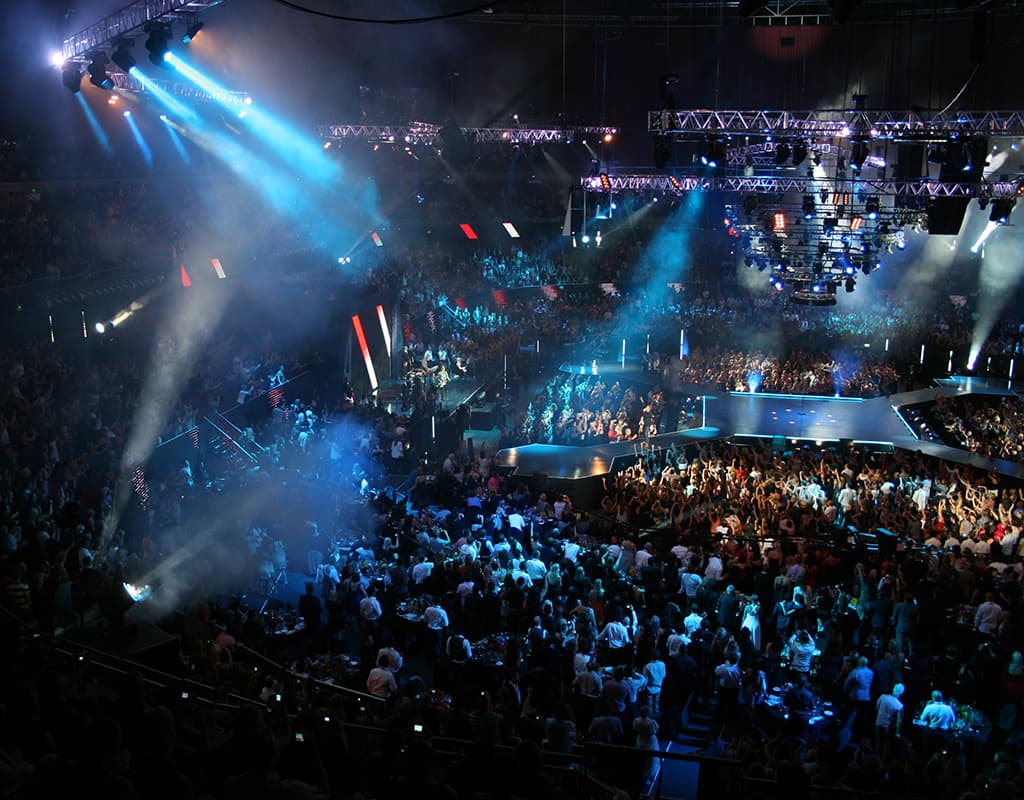
LED TO DISTRACTION
The technology was extensive. Four Barco R20 Projectors were used to throw IMAG (Image MAGnification) vision onto 9m x 5m rear projection screens for the audience to view the proceedings. As part of the presentation, eight 42-inch high definition LCD displays hung in portrait mode were flown in and out of the various hosting locations to form a visual kicker alongside the presenters and awards recipients. Stationed around the entire venue, LED technology was a significant visual element. Some 200 panels of Vuepix P25, 25mm resolution transparent LED curtains, enveloped the audience, complemented by a further 200 panels of Vuepix P18 (18mm resolution). Finally 18 panels of Soft-LED drapes completed the picture.
“The 25mm LED was used around the audience seating on Level One of the venue to add some depth to the in-the-round design, mainly to feature in the background of all the TV angles,” said Waley. “The Soft-LED was used to completely surround the VIP guests on the floor level, covering the arena in a full 360° LED vista. Additionally we used two P18 screens as the main staging element either side of the room to provide a dynamic backdrop to the performances on the tight camera shots. The 42-inch LCDs were the backdrop to host positions, with each pair of screens flown in and out on an independently controlled Kinesys system.”
With such an extensive video brief, the management of the various feeds was controlled by a Barco Encore system. Rod Morris of Interactive Originals supplied five Apple Macs running Isadora that triggered, synchronised, and replayed all the various video files. Across the entire production, as many as five Encore video processors were deployed, along with up to 14 LED processors. Toby Waley calculates that the video elements at the event pulled a total of around 740 Amps.
Apart from the challenge of the staging, being a television event also presented some inherent considerations that ultimately had little impact on TDC’s approach to the gig. “The fact the show is broadcast doesn’t necessarily introduce any unusual hurdles,” said Waley. “However, being an entertainment industry event, it can be unsettling to know the venue is also full of clients and colleagues.” Together with that, the relatively short prep time of a mere four days, and a rig time of two days, made for the familiar landscape of scurrying techs and sleep deprivation, none of which was reflected in the result.
Of course, video is only part of the show, and it must be integrated with the other visual elements of the awards. “These days video and lighting are so closely tied in. Lighting Designer Hugh Taranto had a great deal of input in the design. It’s great to work with an LD like Hugh who understands video LED and how to make it work with his lighting rig,” Waley said.

THE AUDIENCE AS SCENERY
For Hugh Taranto himself, working in the round and for TV meant there was no ‘backdrop’ as such to light. “We were forced to light the audience and the venue as the set in the background,” he told AV. “We had to be very aware that lamps being used as backlight could suddenly become frontlights as the talent turned around to face the other direction. As such we had to be much more aware of this than in a more prosc-arch-style stage and audience arrangement.”
To meet the 360° staging brief, Taranto developed a symmetrical truss design that encompassed the entire venue and provided audience and effect lighting from a variety of angles. The trusses on the perimeters were often employed as effect and depth lighting in the background. With this in mind Taranto trimmed-in the perimeter trusses as low as possible and lit them internally, while still allowing clear sight lines to the stage from the upper suite levels. An arrangement of circular trusses was then hung over the main stage, attached to further Kinesys-controlled motors. This allowed them to be raised, lowered and even tilted to various positions throughout the night.
In terms of lighting inventory, an exceptional variety of fixtures were used. For the primary front lighting of hosting talent and performances, 10 Robert Juliat 2.5kW followspots were arranged on the upper seating level around the venue. The lighting in the trusses utilised a wide array of robotic luminaires including Martin MAC 700 washes and spots for colouring the stage. Along with these, Vari-lite VL3500 washes, VL3000 spots and Martin MAC 2000 coloured the audience. Of note, Taranto also deployed 18 of the newly introduced Martin MAC IIIs. The trusses also supported LED pars as truss toners, Chromabank LED strips and a variety of conventional DWE Molefay audience blinders. Making use of the technology, Taranto also took the initiative of using robotic lighting for much of what was flown. This meant that very little of the higher-rigged fixtures required manual focussing and needed no crew to scale the trusses and manually adjust the luminaires. “This saved a considerable amount of time,” Taranto reported.
Further, eight lighting risers where placed in the crowd at the lower seating level, upon which lighting was rigged for the background of shots. For this, Taranto chose two bright High End Showguns and two Chromabanks. UK superstar Robbie Williams performed during the evening, with lasers positioned on these same risers adding to his performance.
“”
it can be unsettling to know the venue is also full of clients and colleagues

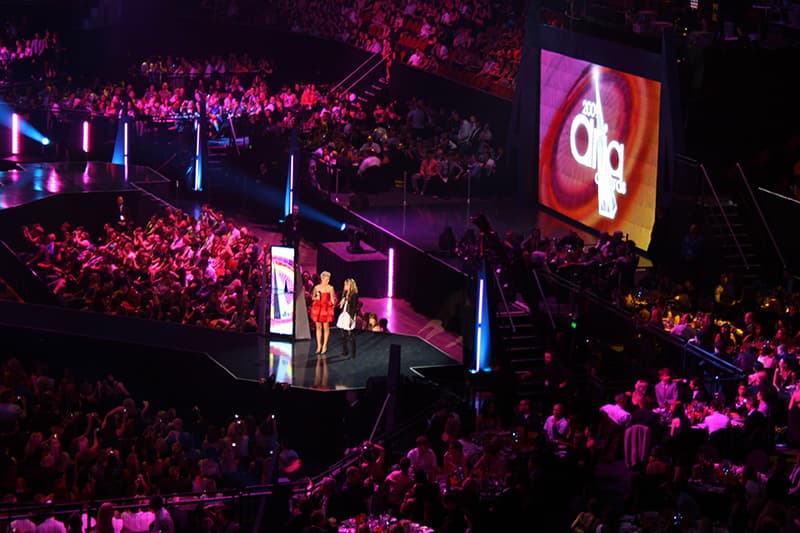
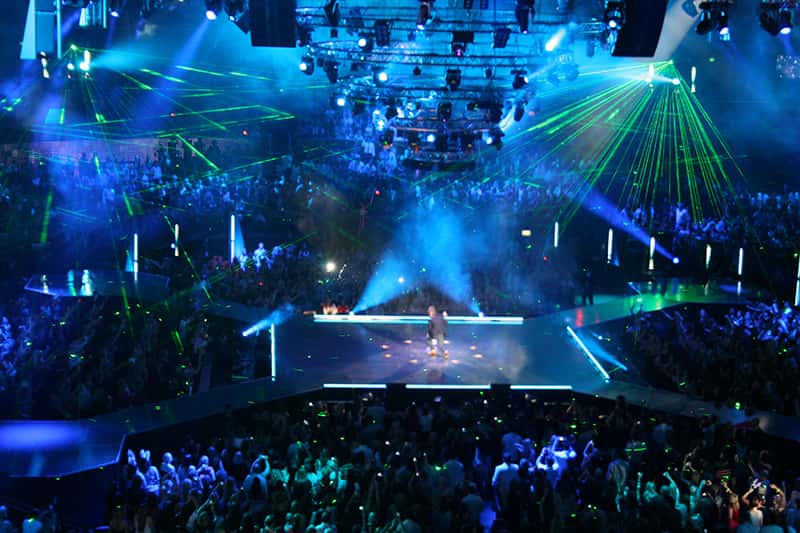
TOTAL CONTROL
In terms of control, the lighting was driven through a network of grandMA consoles and NSP (Network Signal Processor) nodes. Two operators (Taranto himself, with assistant Kath Peck) tag-teamed in a multi-user session, with each assigned different luminaires in their own ‘worlds’. “This allowed us to allocate different groupings of fixtures between the two operators without having to think about separating them onto two separate DMX networks and the associated cabling and fuss this would create,” Taranto explained. This approach gave them significantly more freedom to allocate the lighting fixtures between each of them. The three consoles (two live, plus a hot spare) could each run all, or merely parts, of the show at any time. Each console also acted as a back-up for the others. The NSPs were also spread into different zones around the venue, and data was routed to these via a fibre and UTP network. The roof data and power was fed to the trusses from satellite systems on the north, south, east and west portions of the unused upper seating level. For the followspots, a separate caller, Inica Vardy, was employed to manage the timing and cueing of the 10 operators.
Hugh Taranto spent round eight weeks prior to the event designing and preparing and CAD drafting. His lighting plans were drawn using VectorWorks Spotlight 2010. The lighting was pre-programmed using grandMA PC and grandMA 3D. Kath Peck and Hugh also spent a day at ResolutionX in Melbourne to prepare the show on their consoles. For the Thursday night show, on site programming commenced on the Monday prior, and continued over three days with modifications made while rehearsing host walk-throughs and camera blocking.
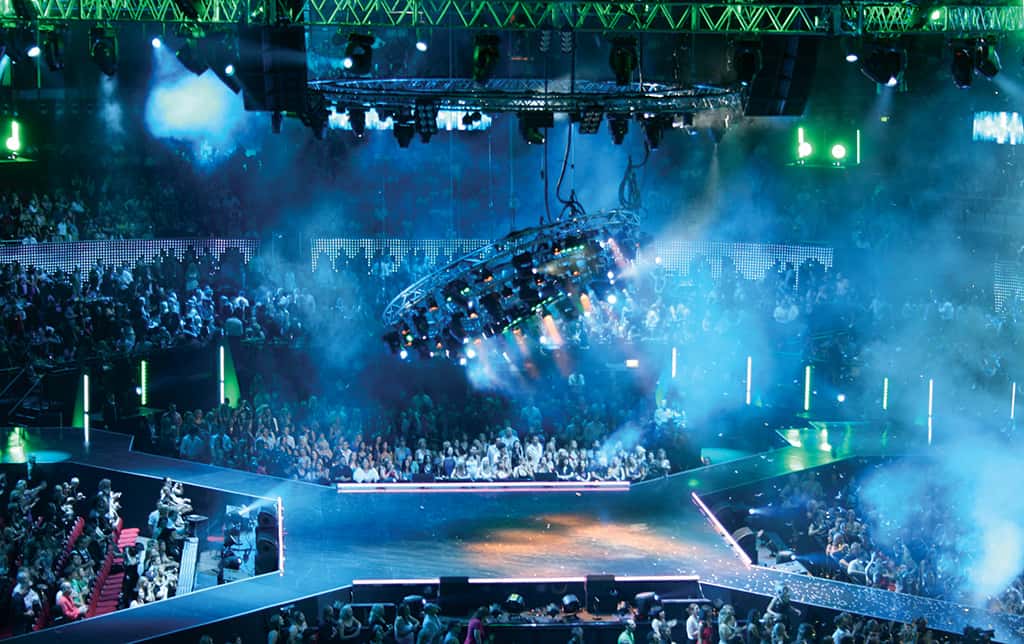
SOUNDS OF ARIA
In a departure from recent years, the 2009 ARIA Awards weren’t a festival-style cavalcade of live bands and double stages. In this case the performances were a combination of live vocals over backing tracks. Inside the arena, Jands Production Services took care of the live sound, as it has done for many years. George Gorga was the audio director for the event.
George Gorga has built himself a mobile production unit, which allows him to mix, monitor and record in comfort. Come showtime George kicks off proceedings by hitting ‘go’ on his Steinberg Nuendo DAW. A stereo feed of the backing track is then routed to the Gearhouse broadcast truck (where it joins the rest of the broadcast mix) and a feed (via an Opticore fibreoptic ‘multicore’) goes to JPS’s FOH and monitor position in the arena.
George will then monitor how the Gearhouse broadcast mix is faring from his van. It’s important to keep the broadcast mix live and exciting. There are eight ambience mics in the room, along with a number of open presenter mics – in fact, there are 20-odd wireless handhelds in use over the course of the evening. George notes how disconcerting it can be for awards broadcasts to leap from live/ambient performances and presentations to dead-dry pre-recorded promos etc. George is a stickler for keeping the broadcast mix’s energy consistently up.
A 56-channel Pyramix system records all the live material from stage, direct from the preamps. That way, if the unthinkable happens – a glitch in a console, for example – Pyramix can chase the Avid video system and call up the missing audio in an emergency post production session (the telecast is delayed by about half an hour post the live show).
Back inside the arena, JPS’s Greg Rosman (FOH) and Bob Daniels (monitors) keep the performers and the punters happy. From the outset it’s obvious this isn’t a no-holds-barred live show pumped to 11 – it’s a television spectacular. There is plenty of PA hanging in the air, but largely because of the 360° coverage dictated by the in-the-round configuration. Four JBL Vertec arrays do most of the work, while four smaller L-Acoustics ARCS arrays fill where there’s not enough overlap in the Vertec coverage. Come showtime, the system gently ticks over in an EPA-friendly fashion – conservatism rules, as the greatest sin is for feedback to hit the broadcast mix.



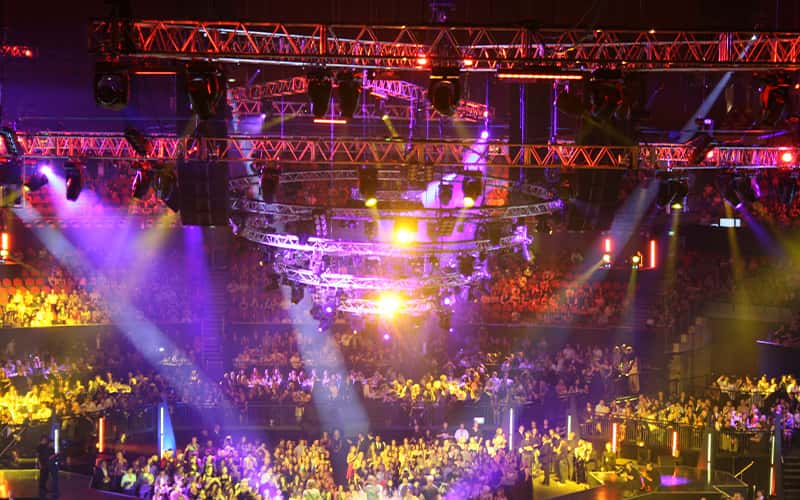
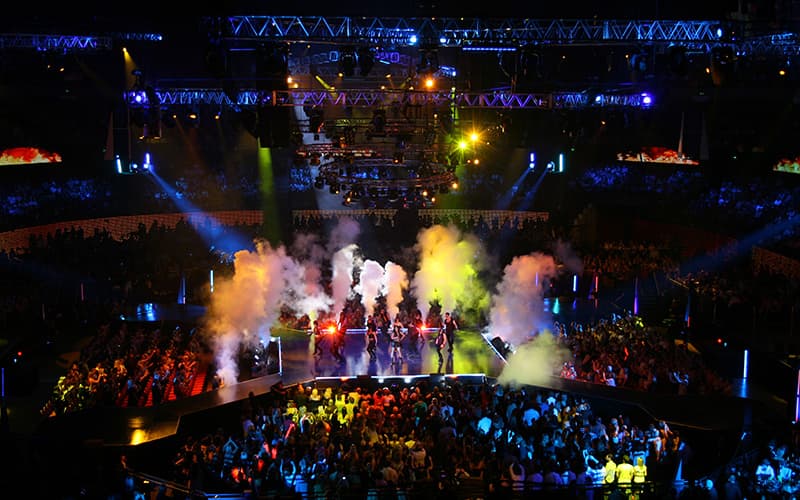
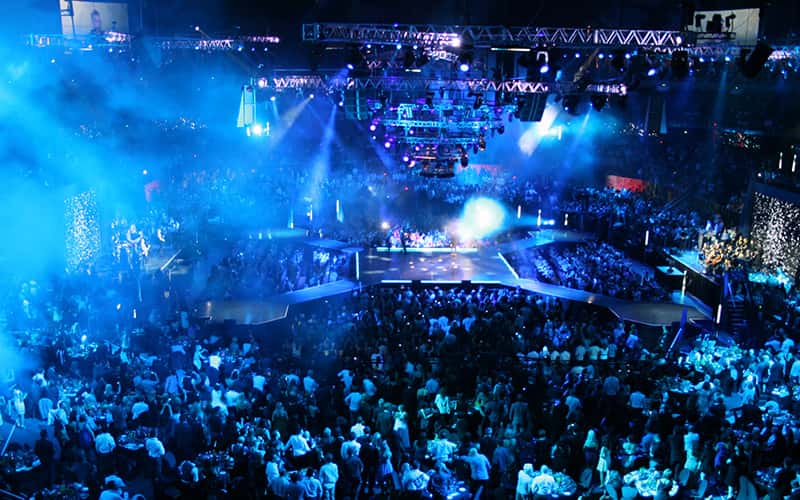
ARMCHAIR RIDE
Irrespective of watching the event from the venue or the armchair at home, the entertainment experience is unique from either perspective, and this situation brings to bear the position modern vision operators and designers find themselves in today. The expectations of the high definition widescreen viewing TV crowd bring millions more audience to any such concert event, sometimes from across the world, where confetti cannons, lasers and mere ‘left and right’ audio just don’t cut it any more. And the challenge within the arena itself will continue as live audiences demand an experience to match that of multiple live camera angles, interactive overlays and simultaneous internet elements enjoyed at home. The end is certainly not in sight.
LIGHTING TEAM
Hugh Taranto: Lighting Designer/Director
Kath Peck: Lighting Console Operator
Inica Vardy: Followspot Caller
Brad Gander: Chameleon Account Manager
Rob Baker: Lighting Crew Chief
Cliffe Bothwell: Lighting Rigging Supervisor – Kinesys Operator
Daniel ‘Bob’ Perrin: Lighting Systems Tech – Roof Systems
Andrew ‘SOS’ Richie: Lighting Systems Tech – Perimeter Systems
Jhett Slattery: Lighting Tech
Jeremy ‘AJ’ Moore: Lighting Tech
Grant Hickey: Lighting Tech
TDC TEAM
Toby Waley: Video Production Manager
Pete Gibbs: Senior Systems Technician
Steve Cain: LED Systems Technician
Steve Alberts: Pineapple
Matt Hanson: SoftLED god
Leif Wilson: LED assist
Peter Lynas: Front Line Support
Show Support – Local Crew

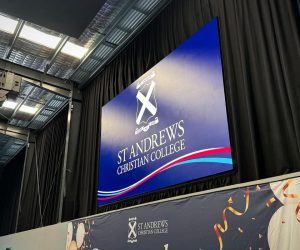
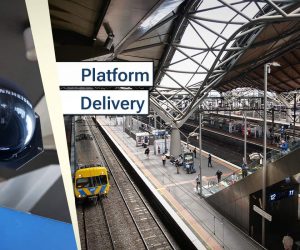
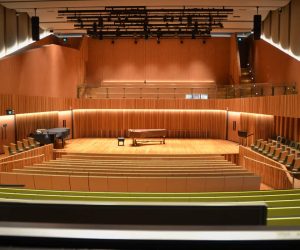
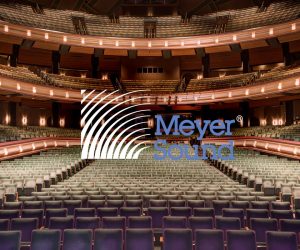
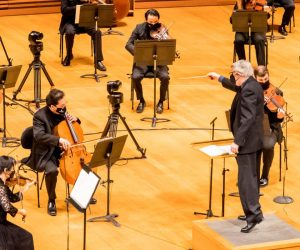
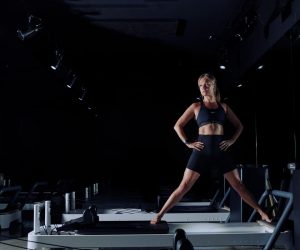
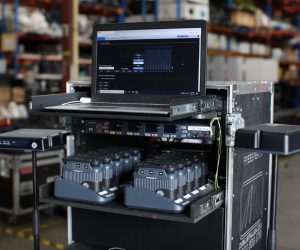
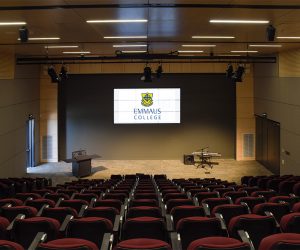
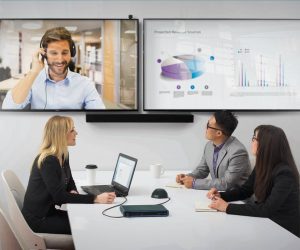
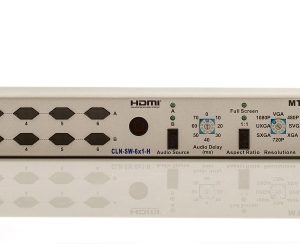
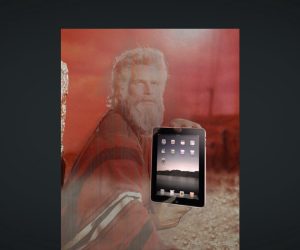
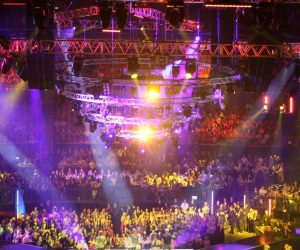


RESPONSES